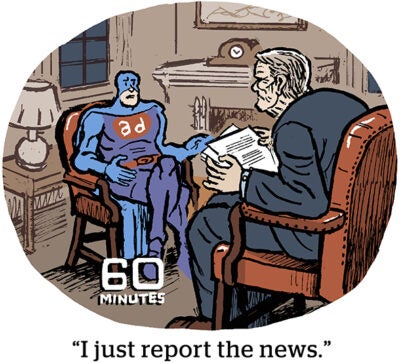Recent reporting from Adalytics and the Wall Street Journal exposed that Forbes, a publisher with more than a century’s worth of brand equity, was running a parallel made-for-advertising site in the shadows.
One of the most trusted brand names in business reporting was using tactics advertisers usually associate with bot farms or clickbait content. This reporting exposes the perils of digital media’s current MFA crisis.
It also brings into focus one critical consideration for brands assessing the quality of their programmatic investment: URLs and domains – even those of big-name publisher brands – cannot be trusted in isolation.
To master your domain, look at the page
MFA content has always been part of the advertising supply chain, but the issue has recently received ample headlines – largely because the issue isn’t going away.
Many organizations have taken the initiative to weed MFA inventory out of their programmatic buys because they don’t see much value in the sites and their inventory.
Irony of ironies, I even wrote about how responsible brands can take action against these undesirable environments … for Forbes’ Technology Council.
Still, most MFA-blocking strategies have been incomplete because they assess the suitability of an entire domain, rather than the individual pages.
If an MFA detection solution sees a URL associated with a “good” domain, most likely its ad inventory will be passed through to the buyer. But such an approach does not include performing the proper diligence of evaluating the actual page environments and ad load associated with that specific URL.
The Forbes issue
This is exactly what went wrong in the case of Forbes.com.
A publisher may have multiple environments that are used to drive ad revenue, and some of those environments may use tactics that we often associate with bad actors.
This may even include buying traffic and sending it to a URL designed to maximize ad impressions for paid traffic. Often, users cannot even navigate to these URLs organically through search or by starting on a site’s homepage.
So how do advertisers avoid these problematic URLs?
They must come to terms with an idea that industry stakeholders have expressed time and time again: There are no magic boxes to check that will automatically protect you from the latest problem that’s gathering headlines.
Brands that are concerned about MFA need to push for more holistic anti-MFA solutions that evaluate an entire domain and also conduct page-level analysis that can pick up ad quality signals in real time and raise the appropriate red flags.
For example, look at signals such as where a page is getting its traffic from, or use reporting that digs into the content and context of sites that are either categorized as MFA or are serving a disproportionately large amount of ad impressions. These can be more reliable MFA identifiers than the site’s domain.
Don’t count on trust when there’s money to be made
Unfortunately, the disclosure that Forbes has been running a hidden MFA version of its site means that advertisers can no longer take for granted that any publisher is truly “safe.”
Who knows how many other sites are operating in a similar fashion, unbeknownst to ad buyers?
Whether publishers are monetizing these alternate ad experiences accidentally or intentionally, the repercussions are the same: Advertisers aren’t always getting what they paid for.
Buyers can rest assured that publishers – of all sizes and stripes – will continue to game the system by hiding ad environments that are not detectable by traditional media evaluation methods.
And, as the Forbes case proves, MFA content can emerge from any corner and continuously shift. Advertisers will need to ensure their tech partners are using a broader strategy to catch the problematic placements before they buy them.
Simply put, failing to combine domain-level analysis and real-time page-level readings leaves advertisers at risk of being exposed to MFA and other less desirable environments. Advertisers need to understand their tech and supply partners’ methodologies and pay more attention to what’s happening at the page level, too, rather than only domains.
“Data-Driven Thinking” is written by members of the media community and contains fresh ideas on the digital revolution in media.
Follow Peer39 and AdExchanger on LinkedIn.
For more articles featuring Mario Diez, click here.

















